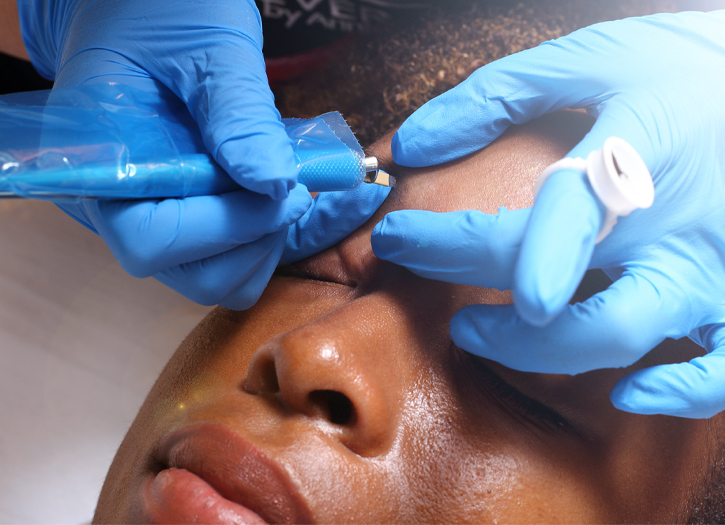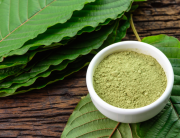Permanent makeup is a cosmetic technique which employs tattoos (permanent pigmentation of the dermis) as a means of producing designs that resemble makeup, such as eyelining and other permanent enhancing colors to the skin of the face, lips, and eyelids. It is also used to produce artificial eyebrows, particularly in people who have lost them as a consequence of old age, disease, such as alopecia totalis, chemotherapy, or a genetic disturbance, and to disguise scars and white spots in the skin such as in vitiligo.
Most commonly called permanent cosmetics, other names include dermapigmentation, micropigmentation, and cosmetic tattooing, the latter being most appropriate since permanent makeup is applied under sterile conditions similar to that of a tattoo. In the United States the inks used in permanent makeup are subject to approval as cosmetics by the Food and Drug Administration. The pigments used in the inks are color additives, which are subject to pre-market approval under the Federal Food, Drug, and Cosmetic Act.
The first documented permanent makeup treatment was done by the famous U.K. tattoo artist Sutherland MacDonald in 1902 at his parlor, #76 Jermyn Str., London, “all-year-round delicate pink complexion” on the cheeks. In 1920s this “London fad” crossed the Atlantic, and the “electrically tattoing [sic?] a permanent complexion or blush on the face” became popular in the USA. The tattooist George Burchett, a major developer of the technique when it became fashionable in the 1930s, described in his memoirs how beauty salons tattooed many women without their knowledge, offering it as a “complexion treatment … of injecting vegetable dyes under the top layer of the skin.”
The best possible colour results can perform for many years or may begin to fade over time. The amount of time required for this depends per person. While permanent makeup pigment remains in the dermis, its beauty-span may be influenced by several possible factors, including environmental, procedural and/or individual factors.Sun exposure fades colour. The amount and colour of pigment deposit at the dermal level can affect the length of time that permanent makeup looks its best. Very natural-looking applications are likely to require a touch-up before more dramatic ones for this reason. Individual influences include lifestyles that find an individual in the sun regularly, such as with gardening or swimming. Skin tones are a factor in colour value changes over time.
As with tattoos, permanent makeup may have complications, such as migration, allergies to the pigments, formation of scars, granulomas and keloids, skin cracking, peeling, blistering and local infection.The use of unsterilized tattooing instruments may infect the patient with serious diseases such as HIV and hepatitis. Removal problems may also ensue, due to patient dissatisfaction or regret, and they may be particularly difficult to remove in places such as eyelids and lips without leaving permanent sequelae. Compliance with ‘standard precautions’ and a uniform code of safe practice should be insisted upon by a person considering undergoing a cosmetic tattoo procedure.







Add Comment